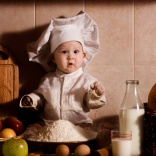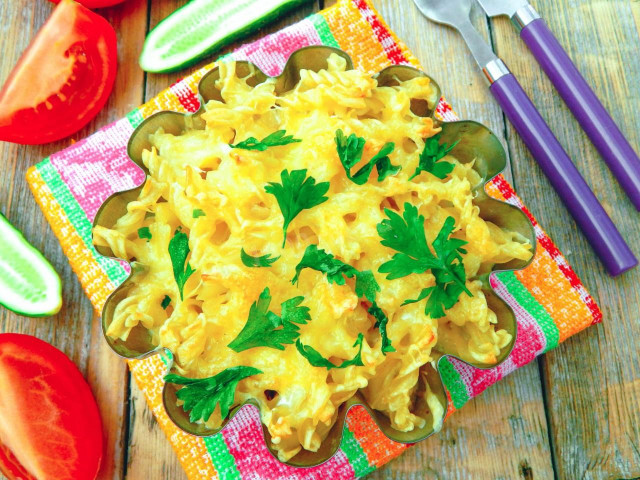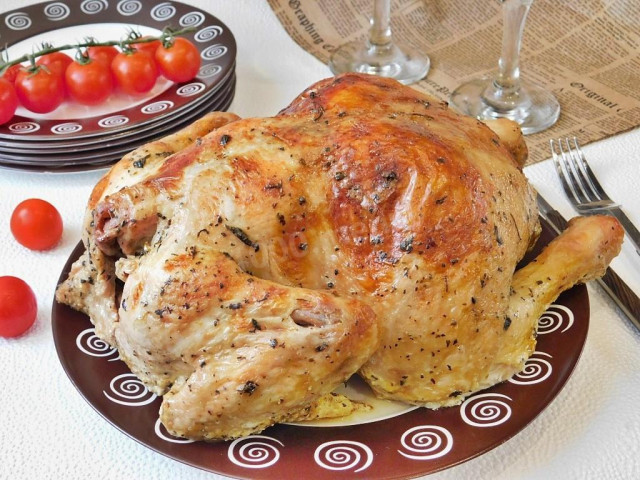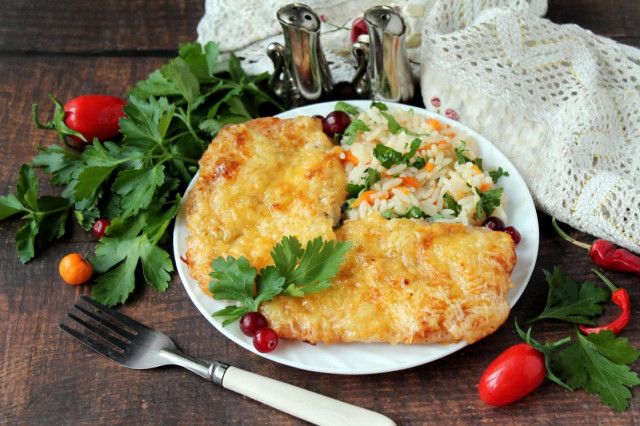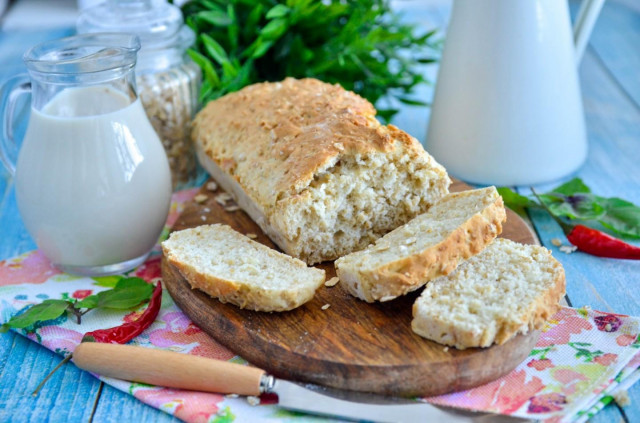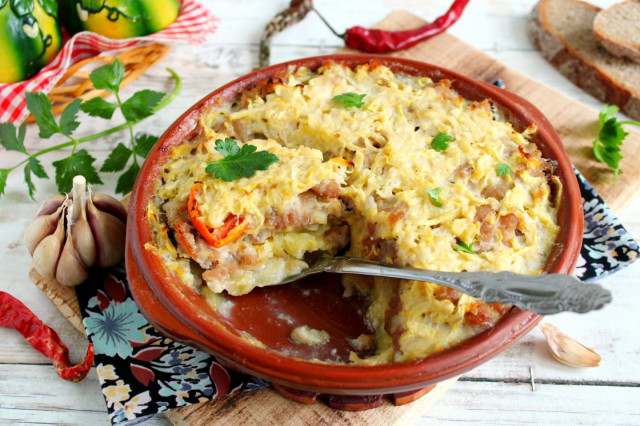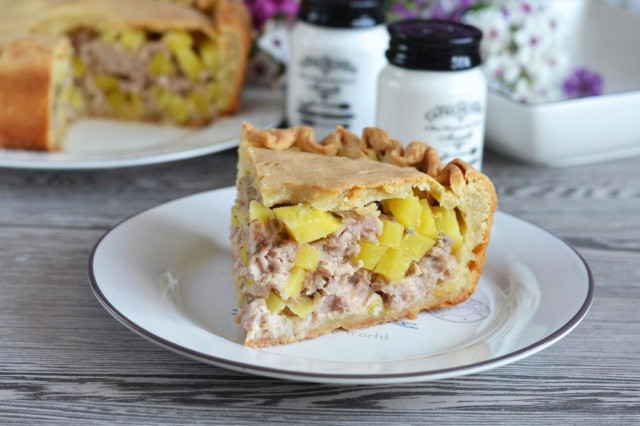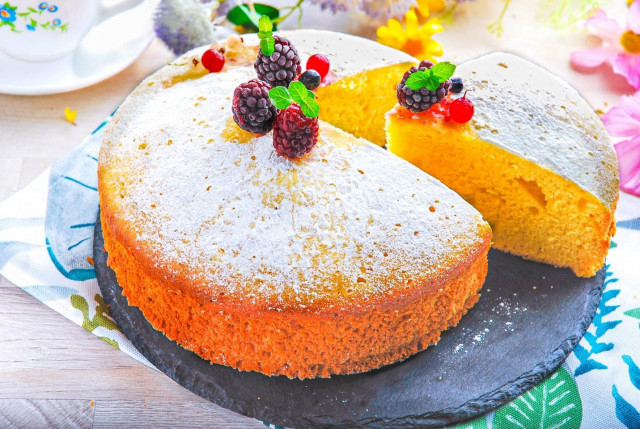Composition / ingredients
Step-by-step cooking
Step 1:
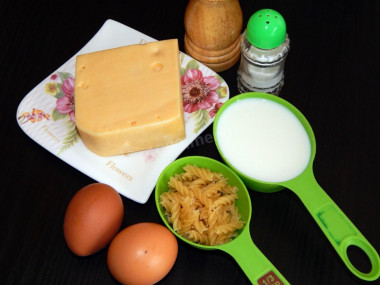
How to make a casserole with macaroni and cheese in the oven? Prepare the ingredients. You can take any form of pasta at will and availability, any hard cheese will do. Wash the eggs and dry them with paper napkins. Pour water into a saucepan and put it on the stove. I recommend taking bottled or filtered water.
Step 2:
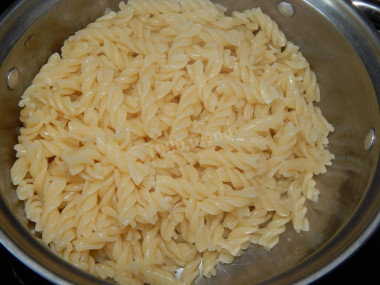
Bring the water in the pan to a boil, add a pinch of salt. Put the pasta in the boiling water, immediately mix them with a spoon so that they do not stick to the bottom. Cook the pasta over medium heat until tender. Drain the water, sprinkle the pasta with vegetable oil so that they do not stick together, let them cool down a little.
Step 3:
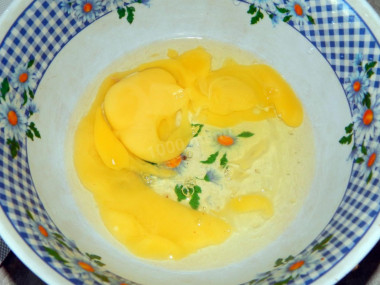
In a bowl, beat the raw chicken eggs.
Step 4:
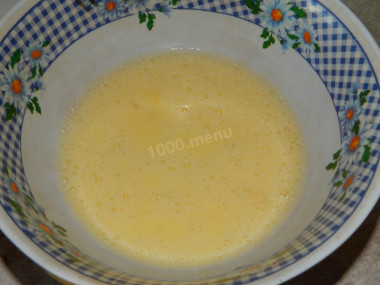
Whisk them with a whisk or fork with the addition of salt and ground black pepper until a homogeneous mixture is obtained.
Step 5:
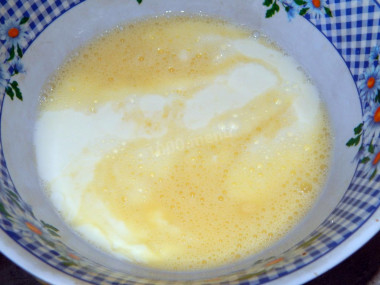
Pour milk into a bowl with egg mixture, mix.
Step 6:
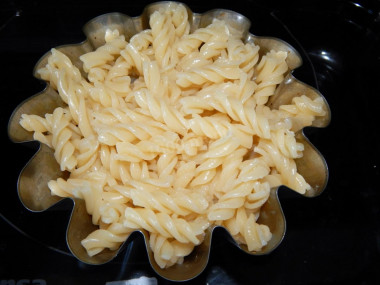
Grease the casserole dish with butter. You can take a large or small portion form, and then serve the casserole in them directly to the table. In a greased form, transfer the boiled pasta. Fill them with the milk-egg mixture so that it is on the same level with the pasta.
Step 7:
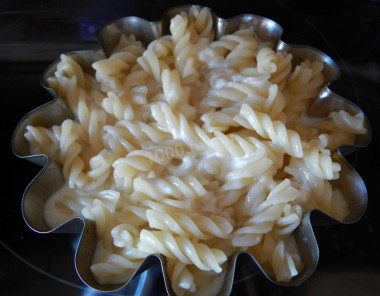
Grate the hard cheese on a medium grater. Sprinkle the macaroni with grated cheese on top.
Step 8:
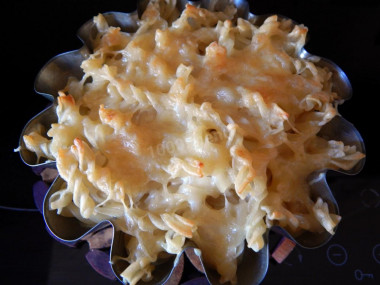
Preheat the oven to 180 degrees. The casserole is prepared for about 20 minutes, but focus on the work of your oven. In addition, the cooking time depends on the size of the mold in which the casserole is prepared. Remove the casserole from the oven when it is browned on top. Since all the ingredients in the casserole are almost ready, you should not keep it in the oven for a long time, otherwise it will dry out, the milk-egg mixture will evaporate strongly, the dish will be tasteless.
Step 9:
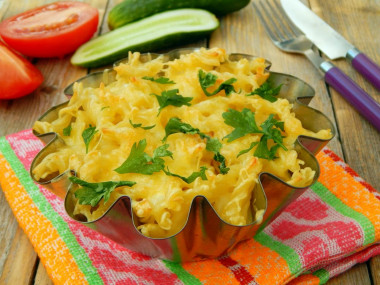
Serve the finished casserole hot, optionally with mayonnaise or sour cream, fresh vegetables. Enjoy your meal!
This recipe is suitable for the case when there are pasta left over from lunch. A light and delicious dinner for the whole family will be ready in a matter of minutes. It will remain to supplement the macaroni and cheese casserole with fresh vegetables, optionally a piece of meat and sauce. Although the dish can be called independent and very satisfying, since it consists of protein and carbohydrates and does not require any supplements. In addition, this dish can be attributed to the budget, the ingredients are available, there will always be in every home.
How to boil pasta properly? Take a spacious saucepan, pour water at the rate of 100 grams of pasta 1 liter of water. The main thing is that the products float freely in the liquid. Add salt to taste. Bring the water to a boil. It is important to put the pasta in boiling water, otherwise they may stick together. Cook over medium heat, stirring occasionally, until fully cooked or al dente (cooking time is always indicated on the package). Put the finished pasta in a colander and let the liquid drain. It is not necessary to rinse the finished pasta with water. If you do not plan to immediately mix the pasta with the sauce, then in order to avoid sticking hot pasta, you can send them from the colander back into the pan and add a teaspoon of olive oil (or a piece of butter)and mix gently.
Keep in mind that everyone's ovens are different. The temperature and cooking time may differ from those specified in the recipe. To make any baked dish successful, use useful information about the features of ovens !
Caloric content of the products possible in the composition of the dish
- Whole cow's milk - 68 kcal/100g
- Milk 3.5% fat content - 64 kcal/100g
- Milk 3.2% fat content - 60 kcal/100g
- Milk 1.5% fat content - 47 kcal/100g
- Concentrated milk 7.5% fat content - 140 kcal/100g
- Milk 2.5% fat content - 54 kcal/100g
- Pasta, premium grade, fortified - 337 kcal/100g
- Pasta, premium, dairy - 309 kcal/100g
- Pasta, premium grade, egg - 342 kcal/100g
- Pasta made from flour of the 1st grade - 333 kcal/100g
- Pasta made of flour in / with - 338 kcal/100g
- Boiled pasta - 135 kcal/100g
- Pasta - 338 kcal/100g
- Dutch cheese - 352 kcal/100g
- Swiss cheese - 335 kcal/100g
- Russian cheese - 366 kcal/100g
- Kostroma cheese - 345 kcal/100g
- Yaroslavsky cheese - 361 kcal/100g
- Altai cheese 50% fat content - 356 kcal/100g
- Soviet cheese - 400 kcal/100g
- Cheese "steppe" - 362 kcal/100g
- Uglich cheese - 347 kcal/100g
- Poshekhonsky cheese - 350 kcal/100g
- Lambert cheese - 377 kcal/100g
- Appnzeller cheese with 50% fat content - 400 kcal/100g
- Chester cheese with 50% fat content - 363 kcal/100g
- Edamer cheese with 40% fat content - 340 kcal/100g
- Cheese with mushrooms of 50% fat content - 395 kcal/100g
- Emmental cheese with 45% fat content - 420 kcal/100g
- Gouda cheese with 45% fat content - 356 kcal/100g
- Aiadeus cheese - 364 kcal/100g
- Dom blanc cheese (semi-hard) - 360 kcal/100g
- Lo spalmino cheese - 61 kcal/100g
- Cheese "etorki" (sheep, hard) - 401 kcal/100g
- White cheese - 100 kcal/100g
- Fat yellow cheese - 260 kcal/100g
- Altai cheese - 355 kcal/100g
- Kaunas cheese - 355 kcal/100g
- Latvian cheese - 316 kcal/100g
- Limburger cheese - 327 kcal/100g
- Lithuanian cheese - 250 kcal/100g
- Lake cheese - 350 kcal/100g
- Gruyere cheese - 396 kcal/100g
- Ground black pepper - 255 kcal/100g
- Butter 82% - 734 kcal/100g
- Amateur unsalted butter - 709 kcal/100g
- Unsalted peasant butter - 661 kcal/100g
- Peasant salted butter - 652 kcal/100g
- Melted butter - 869 kcal/100g
- Vegetable oil - 873 kcal/100g
- Salt - 0 kcal/100g
- Chicken egg - 80 kcal/100g
